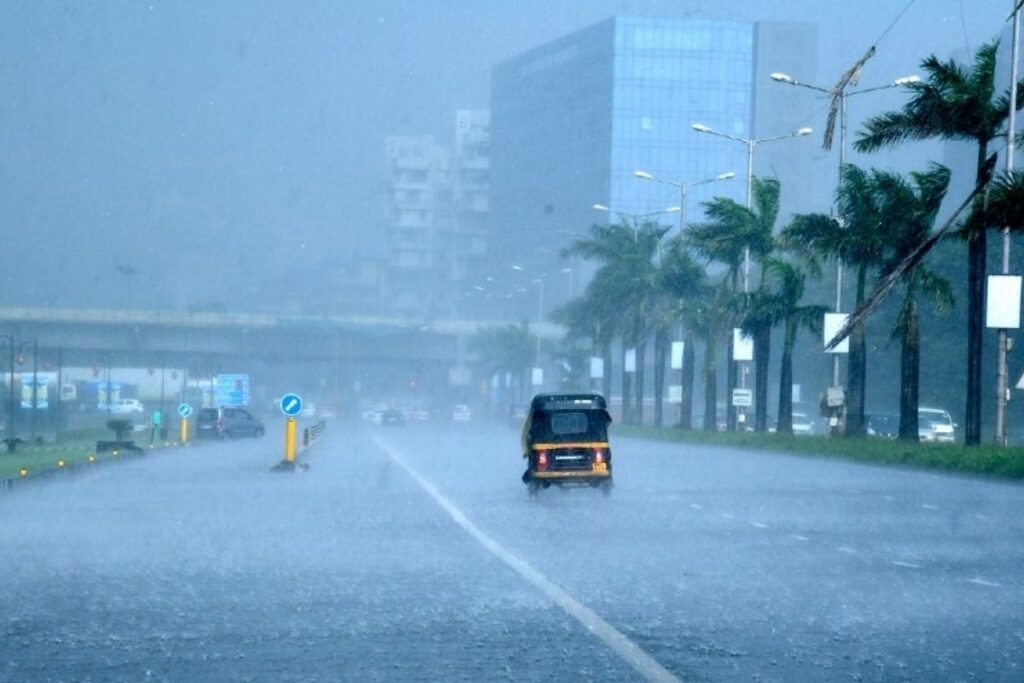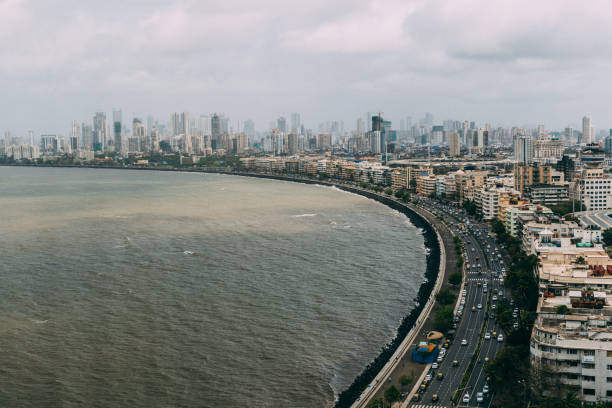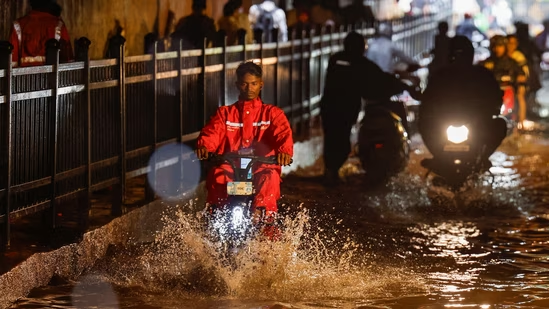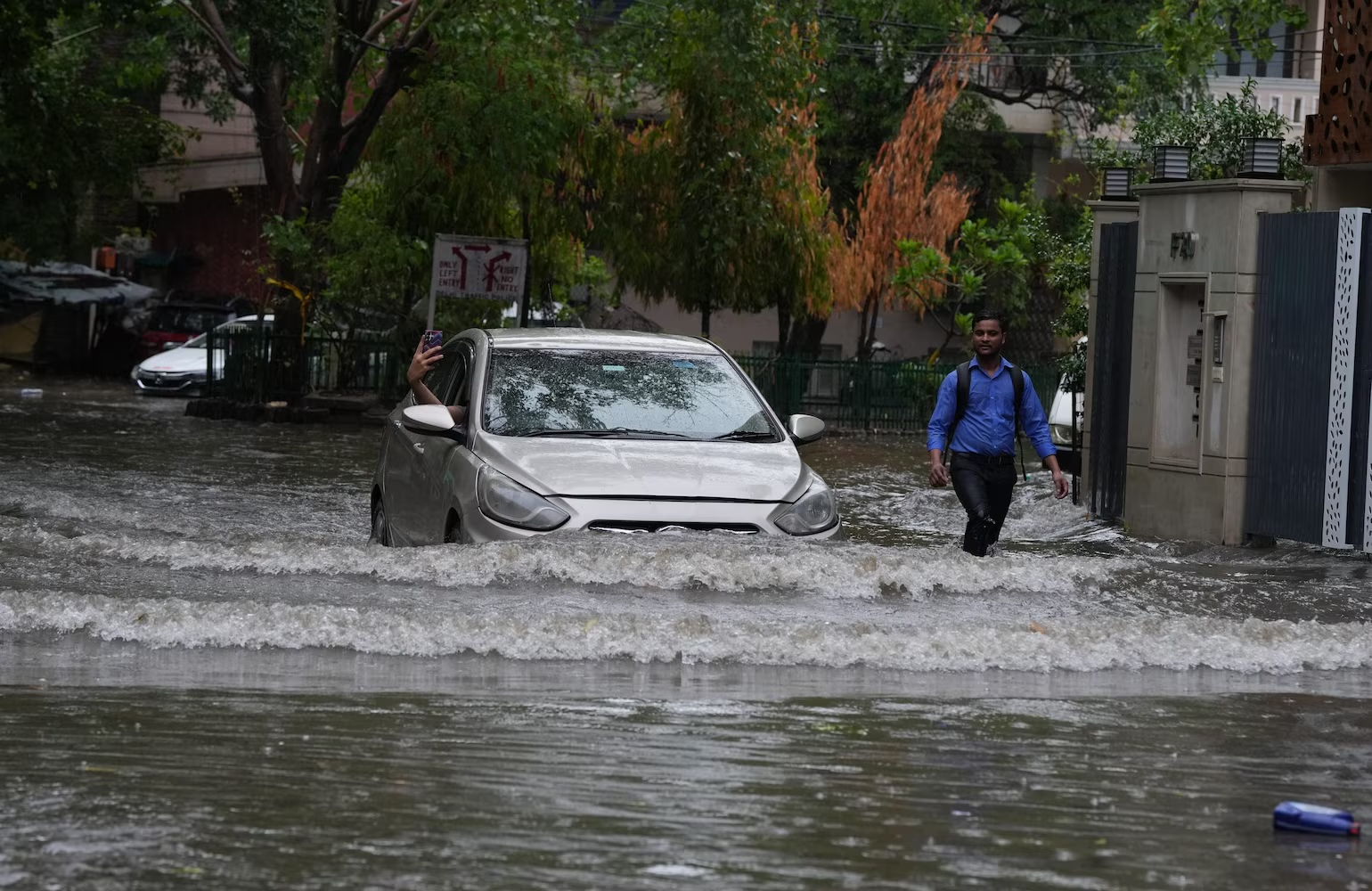Rainy season in Mumbai is often a double-edged sword – bringing much-needed relief from the scorching heat, but also unleashing chaos on the city. The recent deluge that swept through the financial capital left its mark with 300 mm of rain in just six hours, sending Mumbaikars scrambling for cover and authorities on high alert. Let’s dive into the aftermath of this intense downpour and explore how Mumbai coped with nature’s fury.
Mumbai’s Rainy Season

The rainy season in Mumbai is a spectacle of contrasts – it brings relief to the parched land, yet tests the city’s resilience every year. From June to September, dark monsoon clouds blanket the sky, heralding heavy downpours that engulf the bustling metropolis in a watery embrace.
Mumbai’s streets transform into rivers, with commuters wading through knee-deep water and umbrellas becoming essential accessories. The city’s spirit remains undaunted as life goes on amidst the rain-soaked chaos, with vendors setting up makeshift stalls and children gleefully splashing in puddles.
Despite the challenges posed by flooding and traffic snarls, there is a certain beauty in Mumbai’s monsoon season – from lush greenery adorning every nook and cranny to the rhythmic sound of raindrops lulling residents to sleep at night.
Overview of the Recent Heavy Rainfall

Mumbai’s infamous monsoon season has once again made its grand entrance, with recent heavy rainfall causing quite a stir in the city. The downpour was relentless, as Mumbai recorded a staggering 300 mm of rain in just six hours! Streets turned into rivers, and umbrellas became essential accessories for anyone braving the outdoors.
The Indian Meteorological Department (IMD) wasted no time in issuing an alert for the city, warning residents to brace themselves for more showers. Schools took precautionary measures by declaring a holiday to ensure the safety of students and staff. Flights were also heavily impacted, with numerous cancellations disrupting travel plans for many passengers.
The unexpected deluge left Mumbai grappling with waterlogged roads and disrupted public transportation services. The city’s infrastructure faced severe challenges as drainage systems struggled to cope with the excess water flow. Despite these hurdles, Mumbaikars showcased resilience by coming together to help those in need during this challenging time.
As always, staying safe during Mumbai’s rainy season requires preparedness and vigilance. It serves as a reminder of nature’s unpredictable power and the importance of community support in times of adversity.
Impact on the City and its Residents

The heavy rainfall in Mumbai had a significant impact on the city and its residents. Streets turned into rivers, leaving many areas submerged under water. Residents faced challenges navigating through the flooded roads, with some even being stranded in their homes or workplaces.
Public transport services were disrupted, causing inconvenience to commuters trying to reach their destinations. The downpour also led to power outages in several neighborhoods, adding to the difficulties faced by the residents. Schools and offices remained shut as a precautionary measure, affecting daily routines and schedules.
Despite these challenges, the resilience of Mumbaikars shone through as communities came together to help those in need. Local authorities worked tirelessly to ensure safety measures were in place and provide assistance where necessary. As the rain subsided, the city began its recovery process, highlighting the strength and solidarity of its people during difficult times.
Response from Authorities and Precautionary Measures
In response to the heavy rainfall in Mumbai, authorities have been actively monitoring the situation and taking precautionary measures to ensure the safety of residents. The India Meteorological Department (IMD) issued alerts well in advance, warning citizens about the impending downpour. Local governing bodies collaborated with emergency services to be prepared for any potential flooding or disruptions caused by the intense rain.
Authorities also closed schools as a safety measure to protect children from venturing out into dangerous conditions. This decision aimed at minimizing risks and ensuring that students remained safe indoors during the inclement weather. Additionally, numerous flights were cancelled at Mumbai’s airports, with officials prioritizing passenger safety above all else.
The quick response from authorities and implementation of precautionary measures underscored their commitment to safeguarding the city’s inhabitants during challenging weather events like this one. By staying proactive and vigilant, officials demonstrated their dedication to preserving public welfare amidst adverse conditions in Mumbai.
Effects on Transportation and Infrastructure
The heavy rainfall in Mumbai not only impacted the daily lives of its residents but also had significant effects on transportation and infrastructure. The city’s roads, already notorious for traffic congestion, turned into waterlogged lanes, causing chaos for commuters trying to navigate through the flooded streets. Public transport systems like buses and trains were disrupted, leading to delays and cancellations that added to the commuting woes of many.
The suburban railway network, often referred to as the lifeline of Mumbai, faced challenges with waterlogging on tracks hampering train services. This led to overcrowded platforms and frustrated passengers waiting for hours for a train to arrive. The situation was no different for those relying on flights as numerous flights were cancelled or delayed due to the adverse weather conditions.
Infrastructure such as bridges and flyovers also bore the brunt of the heavy rain, with reports of waterlogging at key junctions affecting smooth traffic flow. The need for better drainage systems and improved maintenance has been highlighted once again by this annual monsoon havoc in Mumbai.
How Mumbai is Building Resilience for Future Monsoons
In light of the recent heavy rainfall that pounded Mumbai, the city is actively working towards building resilience for future monsoons. The authorities are focusing on implementing strategic measures to mitigate the impact of such extreme weather events.
One key aspect of Mumbai’s resilience-building efforts involves enhancing its drainage systems and sewage infrastructure. By investing in modern technologies and sustainable solutions, the city aims to prevent waterlogging and reduce flooding during heavy rains.
Additionally, urban planning plays a crucial role in preparing Mumbai for intense monsoon seasons. The incorporation of green spaces, rainwater harvesting facilities, and flood-resistant construction practices are being prioritized to bolster the city’s resilience against torrential downpours.
Moreover, community engagement initiatives are being promoted to raise awareness about climate change adaptation and disaster preparedness among residents. With a collective effort from both authorities and citizens, Mumbai is striving to build a more resilient future amidst challenging weather conditions.
Staying Safe During Mumbai’s Rainy Season
In the midst of heavy rainfall and unpredictable weather patterns, it is essential to prioritize safety measures during Mumbai’s rainy season. Here are some tips to stay safe:
1. Stay Informed: Keep track of weather updates from reliable sources like the IMD to anticipate any potential risks.
2. Plan Ahead: If possible, avoid unnecessary travel during heavy rains and plan your outings accordingly.
3. Be Prepared: Carry essentials like umbrellas, raincoats, and emergency contact numbers in case of any unforeseen circumstances.
4. Avoid Waterlogged Areas: Steer clear of flooded streets or areas as waterlogging can pose serious hazards like electrocution or waterborne diseases.
5. Follow Authorities’ Instructions: Adhere to guidelines issued by local authorities regarding evacuation or safety protocols during extreme weather conditions.
6. Check on Vulnerable Individuals: Look out for elderly relatives, neighbors, or those with special needs who may require assistance during inclement weather.
By staying vigilant and taking necessary precautions, we can navigate through Mumbai’s monsoon season safely and ensure the well-being of ourselves and our community amid challenging conditions caused by heavy rainfall.
To know more visit: www.travelyas.com

